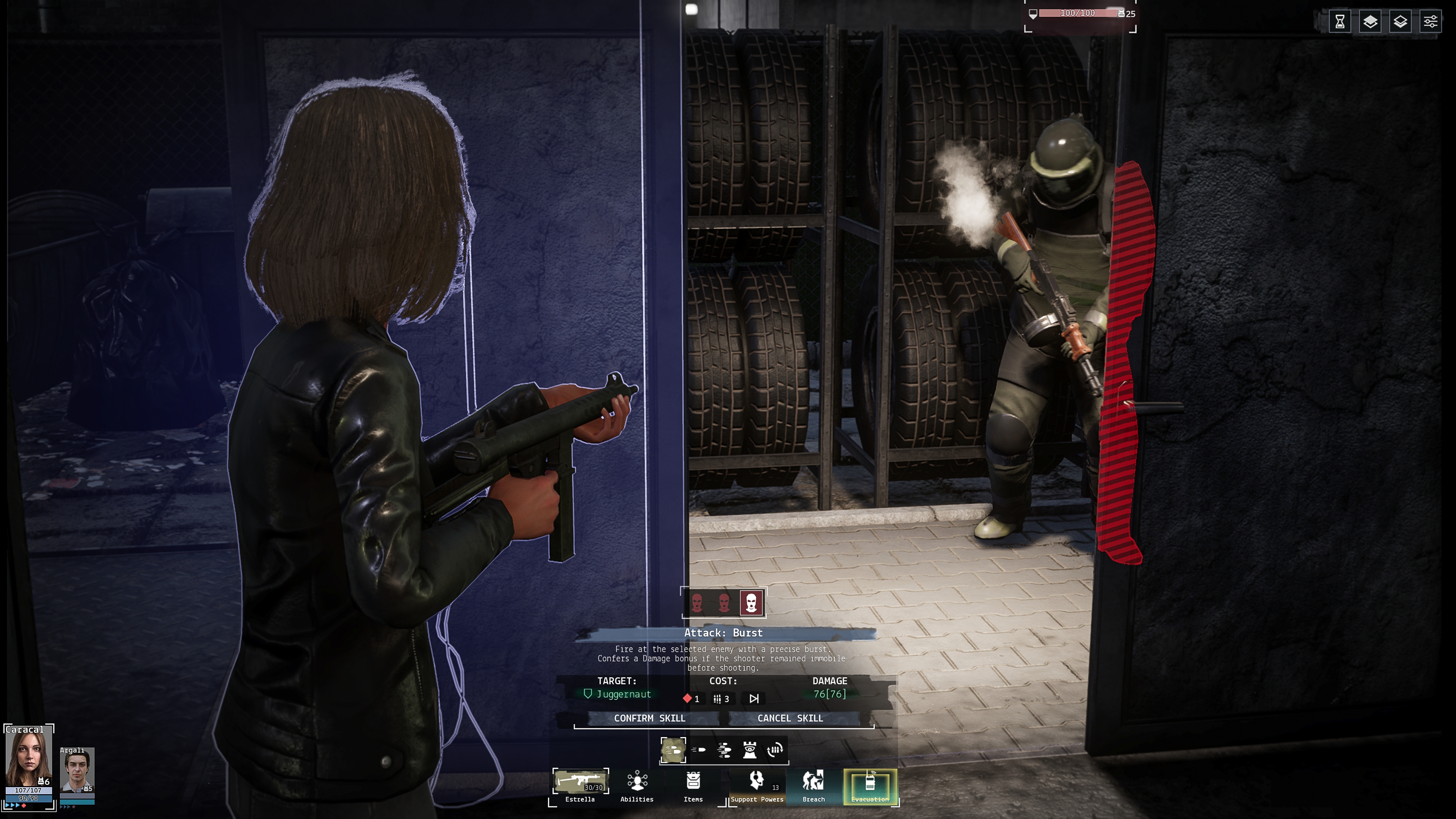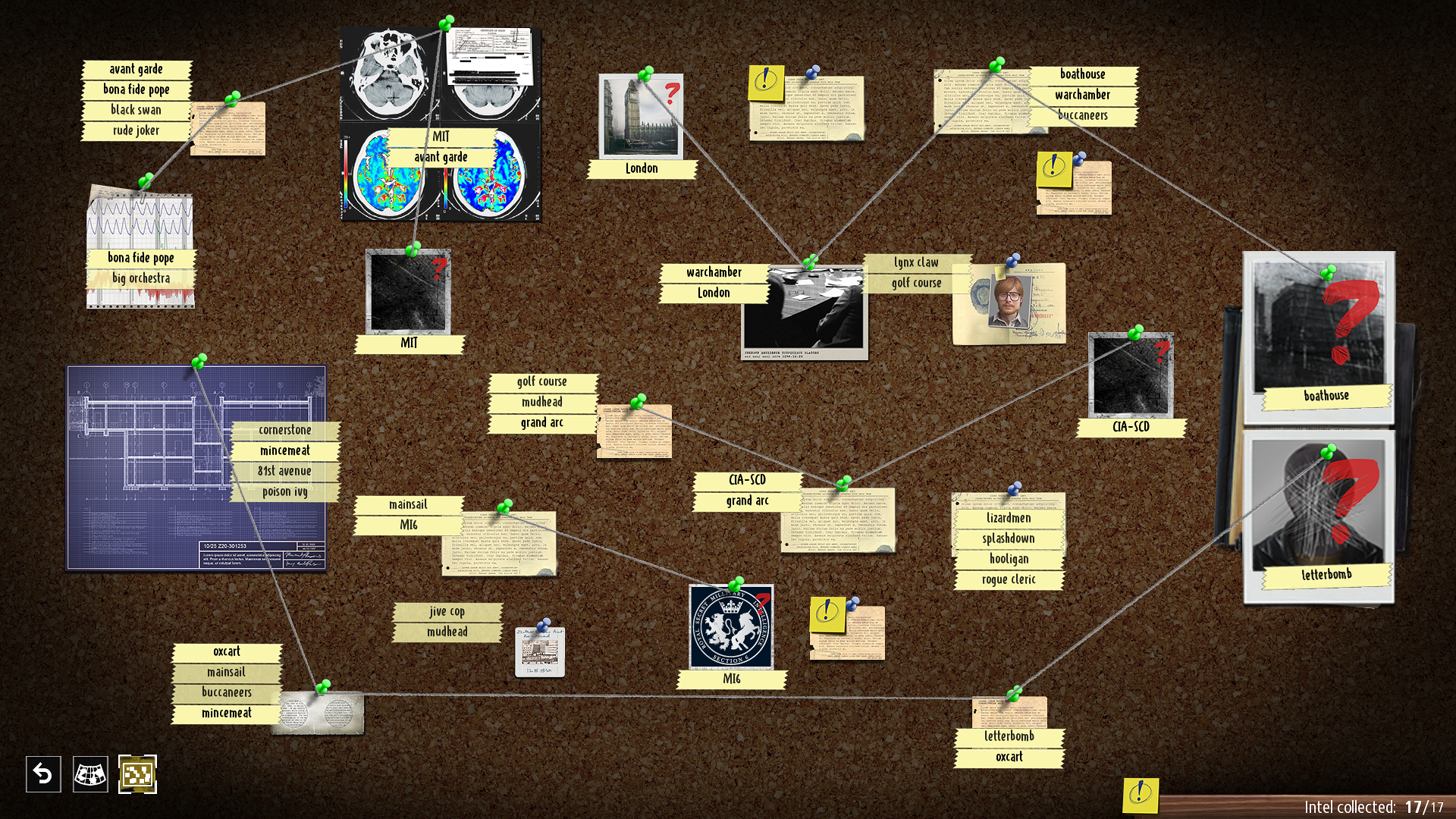Phantom Doctrine
Developer: Creative Forge
Platform: PC - Steam
Review by: Gareth ‘GazChap’ Griffiths
As I’m sure many people reading this can relate to, I’ve always had a fascination with spy thrillers, no doubt started by watching one too many Bond movies as a kid and marvelling at how 007 manages to save the world time and again while wisecracking, raising eyebrows and bedding every woman that walks within 15 metres of him.
So, when I was asked to review Phantom Doctrine – a game that, if you believe the various elevator pitches that fly about in previews, promises to be “XCOM Meets The Cold War” – I jumped at the chance. You see, the XCOM series of games holds something of a dear place in my heart. And not just the recent Firaxis games either, but stretching all the way back to the original X-COM: UFO Defense (or, UFO Enemy Unknown as us Brits knew it) – it may just pip Elite to the title of “my favourite game.”
I’ve tried various other turn-based games over the years, the most impressive being Jagged Alliance 2, with the flawed but enjoyable Silent Storm also coming up high on that list. As a result, I was really keen to dive PPK-first into Phantom Doctrine and see if it does it any better.
Unfortunately, the short answer to that is “no, it doesn’t.”
I can’t be too harsh on it, though. All of the ingredients are there – the turn-based tactical missions, of course – the strategic layer (more on this later) and various other mechanics common to this genre, a research tree, manufacturing, recruitment and what-not… but, in my opinion, none of them really “gel” in the way that some of the other games mentioned above managed to.
Let’s tackle them one at a time, shall we? We’ll start with the tactical layer.
At the start of each mission, you can bring a certain number of agents, and kit them out accordingly. You then choose a starting point on the map and are tasked with completing your mission objectives – ranging from taking out all of the enemy combatants, to rescuing friendly agents, or capturing hostile agents, or even just basic reconnaissance. Ostensibly there’s quite a lot of variety, yet somehow all of the missions end up feeling the same.
Firstly, you have an “infiltration” phase. Here, your agents can move pretty much freely provided they don’t do anything suspicious, or stumble across enemy agents that recognise them. Some areas of the map are protected by cameras or other security measures, most of which can be disabled easily if you can find the controls for each.
In many missions, you’ll end up in a “combat” phase. If you fire a gun, or take down an enemy within view of another, or get spotted somewhere you shouldn’t be, the enemy home in on you and attack with varying degrees of efficiency. Unlike most games of this genre, combat in Phantom Doctrine isn’t random – you can work out what the outcome of your attacks will be, and you have a range of attacks you can make. Some guns have full-auto, burst and single shot, for example. You can also set up overwatch zones to defend your position during the enemy’s turn – this is particularly important once reinforcements start arriving (once they do, they don’t stop!)
Finally, once all of your objectives are complete (or before, if you want to abort) you can call in your evac and get the hell out of Dodge. Once you call your evac team, you only have a few turns to get to the evac zone before you start to be penalised using the game’s “Danger” mechanic – more on this below.
Sometimes, if you’ve carried out certain “pre-ops” that the game gives you, you can assign disguises to one or more of your agents before the mission starts. This basically means the agents can be wherever they please, even in areas that would normally be “trespassing”. They can still be spotted by enemy agents though – unless you level them up with a perk which prevents it (which basically breaks the game and turns those agents into almost unstoppable takedown machines)
In most missions there are other secondary objectives, such as collecting intel and other loot that provide benefits in the strategic layer. Sometimes these are very easy to do, sometimes they’re stupidly difficult and frustrating as a result.
Strategy is everything
What about the strategic layer, then? This is where the game really does start to try new things. To begin with, you have your normal parts – the Crew Quarters where you manage your agents and their loadouts, then a Workshop where you can craft new items and build new facilities for your base, an Infirmary for healing injured agents, and finally the Analytics department for conducting research into your enemy’s operations and gaining intel.
Then you have the Investigations Board. I’ve not seen anything like this before in this kind of game, and although in layman’s terms it’s nothing more than a simple word-matching game, it’s presented very well. You must piece together the clues for various dossiers that come across your desk, using intel recovered from missions and via informants on the strategic layer, drawing connections between words and phrases that repeat – and when you’ve got enough, the game literally connects the dots for you and you move on. It’s great for building the story, but is otherwise a little pointless in my opinion.
And, finally, you have the geoscape. A map of the world, with your HQ highlighted. Every so often, points of interest appear on the map and you can choose to send agents to investigate them. Sometimes it’s nothing, other times you might find an informant who you can pump for information, or stop your enemy from performing their own recon, and whether to keep your agents near one area or spread them out a bit for more rapid reactions is something I’ve still not quite decided upon.
As you perform missions and investigations, both on the strategic layer and on the tactical layer, you build up “Danger”. As your danger level increases, your agents are more likely to be compromised and also – crucially – your HQ is likely to be discovered, which isn’t good at all and can swiftly lead to a game over if you’re not careful on the defense mission.
So why doesn’t it gel?
It’s an interesting one. As mentioned above, all the pieces are there. It should, on paper, be a superb entry into the genre. However, for my money, there are a few key areas that need to be improved before it becomes a “must have”:
To begin with, the user interface is not good at all. This is confounded by a very basic tutorial system which gives very little information away at all. It took me a long time to work out just what the hell I was supposed to be doing, and consequently I had to play a few campaigns before I really got into the swing of things – and by then, I’ll happily admit that I was a little bored.
There isn’t much in the way of help when it comes to the user interface either – some buttons just flat out don’t have any tooltips, while others are so short as to be almost useless.
In the tactical layer, there are odd UI choices too. You can hover your mouse over a guard to see a preview of their patrol route, but there’s no way of hovering your mouse over a space and getting a preview of which enemies will be in line of sight at that location (something that admittedly even XCOM didn’t do until the sequel)
The “base management” aspect also doesn’t feel quite as fleshed out as it could be. Each agent can level up and choose from the same pool of perks and skills, so there’s no specialisms or classes – which, now that I write that out, is possibly a big contributor to the game feeling boring and samey to me.
The world map, or more accurately, the things that happen on it, are also not very well explained. For example, sometimes you’ll be given mission choices that are unavailable because “this is at cross purposes with our current objective” – but it doesn’t say why, and it seems like it would be better off just not being shown at all.
This ties in to another problem with the game – the storyline. It’s not even that it’s bad, because it isn’t – it’s not a million miles away from your typical spy thriller. The problem is that it’s just… boring. I suspect this is more just because of the way that you progress the story (by going on missions that end up feeling samey) than anything else, but I just wasn’t engaged with it at all – and I didn’t expect that.
Summary
To sum up then, I just don’t feel like I can really recommend Phantom Doctrine to anyone. Those people with experience of turn-based games may enjoy it, but its flaws outweigh its good points in my opinion – and similarly, those with no experience of turn-based games will probably find it to be an impenetrable mess of game mechanics.
On the plus side, it looks pretty, it has some decent audio, and the voice acting isn’t bad.
Oh, and if you have a Razer keyboard as I do, the game uses the backlighting quite nicely – when you’re not in danger, the keys “wipe” across with white light, but as soon as you get spotted they go red and pulse faster.
💧 RATING: MELTED 💧
Ratings Explained
ICE COOL (Great Game Recommended)
MELTING (Recommended with reservations, one to consider if you are a fan of the genre)
MELTED (Not A Recommended Purchase)





No comments:
Post a Comment
Like what you see in the Games Freezer?
Why not tell us what you think with a few well-chosen comments? :)